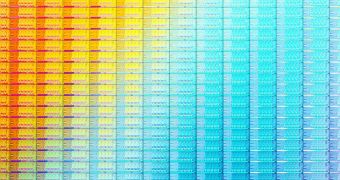Intel has always made its own chips, but recently it has also opened up a foundry business similar, in a sense, to Globafoundries and Taiwan Semiconductor Manufacturing Company.
Paul Otellini, Intel's chief executive officer and president, is confident that the foundry business will eventually become a relevant part of the revenue stream.
Nevertheless, even he admits that it will take around two years for the business arm to become relevant, as it is simply not easy to get customers.
Chip vendors, memory makers and NAND Flash storage device producers already have contracts with the other two, or other companies from Taiwan, South Korea, China, etc.
Intel has recently got Altera's patronage, and has supposedly landed orders from Cisco too. Since both these clients are large, fabless chip companies, their orders may become significant in a couple of years.
It all depends on how well Intel performs, and how consumer demand for chips progresses.
“The business model that we have for the foundry assumes value based pricing,” said Mr. Otellini during a quarterly Q&A with financial analysts.
“The people that we are soliciting and people that are attracted to us are those who see the advantages of our technology as it manifests itself in their products and gives them an advantage in the marketplace. So it’s a healthy business for us.”
The name of the business division is Intel Custom Foundry. It was established three years ago, as a result of Intel not using its production capacity to the fullest with its own CPUs, thus losing money on maintenance, cooling, etc.
“I’ve described the strategy before as a crawl, walk, run strategy. We are past crawling. We are in the mode of collecting serious customers,” said Paul Otellini.
“The design win activity leads the announcement activity, as you would expect in this business, and there are some other customers that we still have not yet publicly announced. In terms of the business […] it will not have a significant revenue impact to the company for two to three years. That’s the design cycle for these products.”

 14 DAY TRIAL //
14 DAY TRIAL //